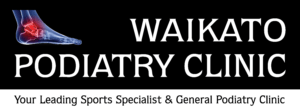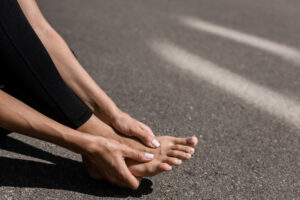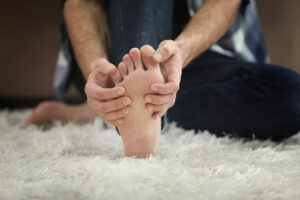Forefoot Pain – How can we Help?
 What is Forefoot Pain?
What is Forefoot Pain?
There are many different types and causes of forefoot pain. Some common conditions are:
Morton’s Neuroma
Morton’s Neuroma is by far the best known forefoot pathology. A Morton’s neuroma is a lump of nerve tissue fibers that occurs between the bones of the forefoot.
Sesamoiditis
Sesamoiditis is the injury of the sesamoid bones. These are tiny little bones inside a tendon under the big toe joint.
Capsulitis and Bursitis
Capsulitis is an inflammation of the joint capsule which covers the knuckles in your feet (Metatarsal Phalangeal joint). We often hear statements of “it feels like walking on a stone”. Reproducing the symptoms help confirm the diagnosis. There may be localized swelling and redness in the region.
Bursitis is an inflammation of the fluid-filled sac (bursa) that lies between a tendon and bone. They assist with movement and reduce friction between moving parts.
Plantar Plate injury/rupture:
On the bottom of each small toe joint there is a ligament between the base of the toe and the rest of the foot. This ligament is called the plantar plate which acts to keep the toe and the foot from separating. When walking, the toes will bend at the base of the toe joint just before the foot pushes off the ground. The plantar plate holds the toe in place and brings the toe back straight.
In some cases, this ligament can become overstretched or “tear”, causing pain and deformity to the area, leading to a gradual dislocation of the toe.
How do I know what’s causing my forefoot pain?
At Waikato Podiatry Clinic, our specialists are trained with techniques to assess and determine the cause of your forefoot pain; correct diagnosis is essential. Pain in the forefoot can be complex and may require some imaging. This can be organised by your Podiatrist.
Some of the most common causes of forefoot pain are:
Morton’s Neuroma:
These often become sore with compression (tight shoes), twisting and excessive time on your feet.
Sesamoiditis:
Causes often include compression of the ball of the foot on hard surfaces compressing the sesamoids and causing inflammation and pain.
Capsulitis and Bursitis:
Causes for Capsulitis are multifactorial, but often occur from footwear that increases pressures underneath the capsules and metatarsals. Overuse or a new activity can aggravate this area also. Bursitis can be caused by chronic overuse, trauma, rheumatoid arthritis, gout, or infection. Chronic inflammation can occur with repeated injuries in the feet.
Plantar Plate injury/rupture:
In some cases, the ligament can become overstretched or “tear”, causing pain and deformity to the area, leading to a gradual dislocation of the toe.
Reducing Forefoot Pain
Once you’ve received a correct diagnosis, the treatment prescribed by your Podiatrist will reduce the pain caused and aim to address the inflamed and irritated tissue by reducing the load through the area.
Prescribed orthotics will reduce the pain experienced.
How can forefoot pain be treated?
Morton’s Neuroma:
Footwear is the first thing checked; narrow shoes and high heels push the weight onto the forefoot and squeeze the nerve aggravating this condition. Proper sized and fitted footwear is essential to managing this problem.
Sesamoiditis:
The treatment aims at de-loading this painful area with footwear and orthotics, helping to reduce repetitive trauma and load, and allow the tissue to heal. Other treatment options involve recommendations for anti- inflammatory strapping, padding and reducing aggravating activity.
Capsulltis and Bursitis:
Our podiatrists can help with stabilization of the area, advice on activity modification, offloading the area with padding and strapping. Orthotics and cross-over taping help to stabilize the joint and give pain relief.
Footwear prescription is important here also. In the case of a highly inflamed and acute bursitis corticosteroid injection may be necessary.
Plantar Plate injury/rupture:
Treatment includes taping, padding, insole modifications and orthotic devices aimed at realigning the forefoot. Occasionally the structure is repaired surgically.
 Long Term Solution for forefoot pain
Long Term Solution for forefoot pain
Our podiatrists can make a diagnosis and prescribe the most suitable treatment plan for you. Orthotics are sometimes used to address any biomechanical mal alignment with a modified plantar metatarsal pad (PMP) or neuroma dome that separates the impinging metatarsals and the neuroma.
The use of footwear changes, orthoses with modifications such as PMP’s, mobilization of the joints and cortisone injection can all help alleviate painful inflammatory symptoms. Additional treatment options for forefoot pain are available but are usually not recommended without trying these initial conservative therapies.
Still in Pain?
Are you are feeling like you have tried everything but are still in pain?
Do you feel like you have seen every health practitioner you can about your forefoot pain?
We have a track record of diagnosing and successfully treating cases that have previously proven difficult to resolve and we’d love to help you get back on your feet doing what you love.


 What is Forefoot Pain?
What is Forefoot Pain? Long Term Solution for forefoot pain
Long Term Solution for forefoot pain